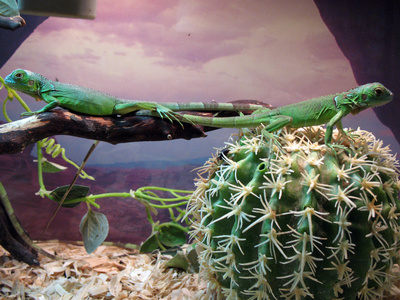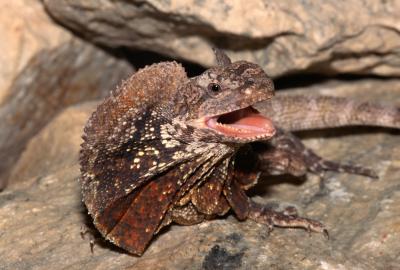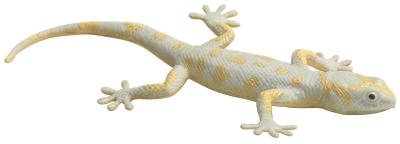
About Blue Belly Lizards. Blue belly lizards are interesting members of the reptile family. They're bright and colorful on their undersides--and very fast. Despite this often vivid belly coloring, their backs are typically darkly colored, making them very difficult to spot in their western U.S. habitats.
The blue belly lizard belongs to the genus Sceloporus, with at least five sub-species. Considered a spiny lizard, it is also called a Western fence or swift lizard. Fully grown, the colorful reptiles measure about 6 inches long.
Blue belly lizards are usually dark gray, black or greenish brown on their backs. The male lizards give the species its name, with bright blue patches on their stomachs and under their legs. In some cases, the male blue belly lizard is speckled with blue all over its body. Although female blue belly lizards do exhibit some of the males' coloring, it is far less bright and noticeable. Often, males expose their blue bellies in a show of territorial control.
The blue belly lizard eats mostly insects and spiders. Like many reptiles, it thrives in heat, often basking in the sun; this makes it vulnerable to predation by birds and snakes. Fortunately, like the chameleon, the blue belly lizard is able to change colors when in danger, blending in with its environment, and is extremely fast. Mating season for the blue belly lizard is in late spring and early summer. The female blue belly can lay as many as 10 eggs, which generally hatch in August.
The blue belly lizard is indigenous to California (where it is most common), as well as parts of Utah, Nevada, Oregon, Idaho and several islands off the coast of California. They do not live in the desert and are common in regions with higher elevations. True to their name, the reptiles are partial to relaxing on fence posts, as well as tree trunks and shrubs.
The blue belly lizard may have a neutralizing effect on ticks that carry Lyme disease. Researchers at the University of California, Berkeley discovered in 1998 that Lyme disease bacteria carried by ticks die when the ticks feed off blue belly lizards. This may be why areas more populated with the reptile tend to have a lower incidence of Lyme disease than areas where the blue belly lizard is not common.
 How to Cure Wood for Lizards
How to Cure Wood for Lizards
How to Cu
How to Cure Wood for Lizards
How to Cure Wood for Lizards
How to Cu
 Natural Habitat of a Lizard
Natural Habitat of a Lizard
Natural Ha
Natural Habitat of a Lizard
Natural Habitat of a Lizard
Natural Ha
 How to Tell the Difference Between Male & Female Frilled Lizards
How to Tell the Difference Between Male &
How to Tell the Difference Between Male & Female Frilled Lizards
How to Tell the Difference Between Male &
 What Reptiles Eat Just Veggies?
What Reptiles Eat Just Veggies?
What R
What Reptiles Eat Just Veggies?
What Reptiles Eat Just Veggies?
What R
 How to Raise a Wild Lizard
How to Raise a Wild Lizard
How to Rais
How to Raise a Wild Lizard
How to Raise a Wild Lizard
How to Rais
Copyright © 2005-2016 Pet Information All Rights Reserved
Contact us: www162date@outlook.com